This content originally appeared on JavaScript January and was authored by Emily Freeman
Joe Karlsson is a software engineer and Developer Advocate at MongoDB. He comes from the frozen tundra of Minneapolis, Minnesota (and yes, it does get really cold here, and no, not everyone here has the accent from the movie, Fargo ?). Joe has been primarily a Node and JavaScript engineer. He has been writing, teaching, and talking about code his entire career. Sharing what he knows and continuing to learn about programming is truly the thing he loves doing the most.
Joe is the co-creator of open source software, including bechdel.io, a web app that tells you if a movie script passes the Bechdel Test or not. In his free time, he is usually drinking Gin and Tonics, eating at a new restaurant, or tinkering on a new art project or open source project.
- My Website - https://www.joekarlsson.com
- Twitter - https://twitter.com/JoeKarlsson1
- GitHub - https://github.com/JoeKarlsson
- YouTube - https://www.youtube.com/c/JoeKarlsson
My favorite things in life are cats ?, computers ? and crappy ideas ?, so I decided to combine all three and explore what was possible with JavaScript by creating a brand new Internet of Things (IoT) device for my feline friend at home. If you’re reading this, you have probably heard about how hot internet connected devices are, and you are probably interested in learning how to get into IoT development as a JavaScript developer. In this post, we will explore why you should consider JavaScript for your next IoT project, talk about IoT data best practices and we will explore my latest creation, the IoT Kitty Litter Box.
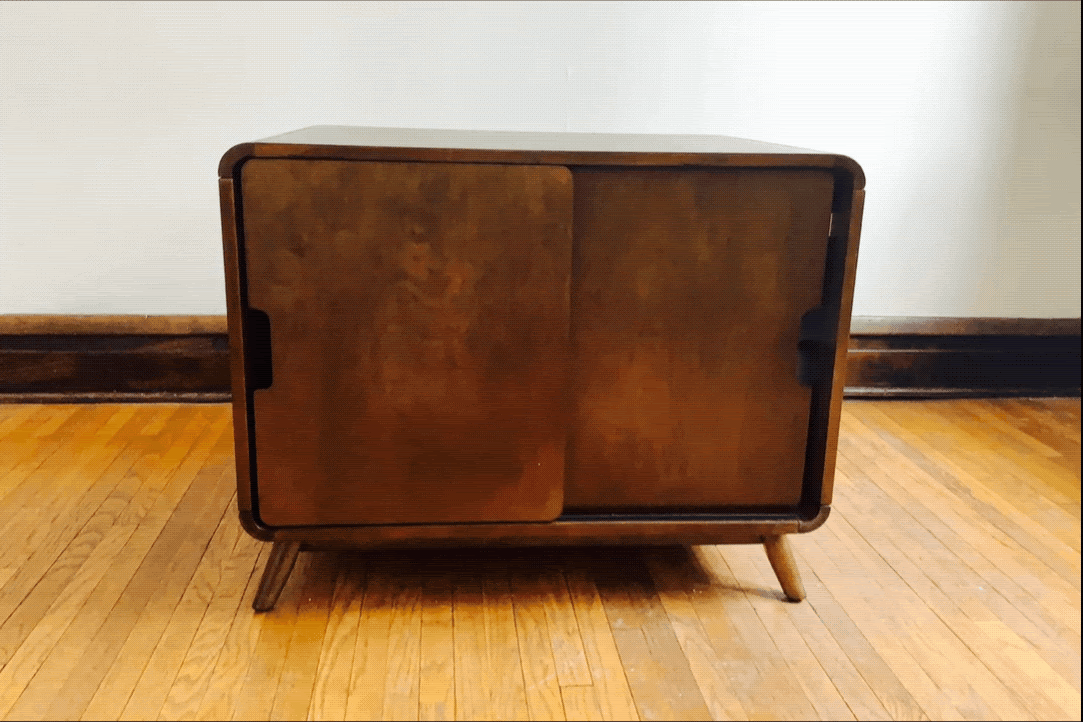
IoT And JS(?!?!)
Okay, so why on earth should you use JavaScript on an IoT project? You might have thought JavaScript was just for webpages? Well, it turns out that JavaScript is famously eating the world and it is now in fact running on lots of new and exciting devices, including most internet enabled IoT chips! Did you know that 58 percent of developers that identified as IoT developers use Node.js[^1]?
The Internet Already Speaks JavaScript
That’s a lot of IoT developers already using Node.js. Many of these developers use Node because the internet already speaks JavaScript. It’s natural to continue building internet connected devices using the de facto standard of the internet. Why reinvent the wheel?
Easy to Update
Another reason IoT developers use Node is it’s ease in updating your code base. With other programming languages commonly used for IoT projects (C or C++), if you want to update the code, you need to physically connect to the device, and reflash the device with the most up to date code. However, with an IoT device running Node, all you have to do is remotely run git pull and npm install. Now that’s much easier.
Node is Event Based
One of the major innovations of Node is the event loop[^2]. The event loop enables servers running Node to handle events from the outside world (i.e. requests from clients) very quickly. Node is able to handle these events extremely efficiently and at scale.
Now consider how an IoT device in the wild is built to run. In this thought experiment, let’s imagine that we are designing an IoT device for a farm that will be collecting moisture sensor data from a corn field. Our device will be equipped with a moisture sensor that will send a signal once the moisture level in the soil has dropped below a certain level. This means that our IoT device will be responding to a moisture event (sounds a lot like an event loop ? )_. _Nearly all IoT use cases are built around events like this. The fact that Node’s event based architecture nearly identically matches the event based nature of IoT devices is a perfect fit. Having an event based IoT architecture means that your device can save precious power when it does not need to respond to an event from the outside world.
Mature IoT Community
Lastly, it’s important to note that there is a mature community of IoT developers actively working on IoT libraries for Node.js. My favorites are Johnny-Five and CylonJS. Let’s take a look at the “Hello World” on IoT devices: making an LED bulb blink. Here’s what it looks like when I first got my IoT “Hello World” code working.
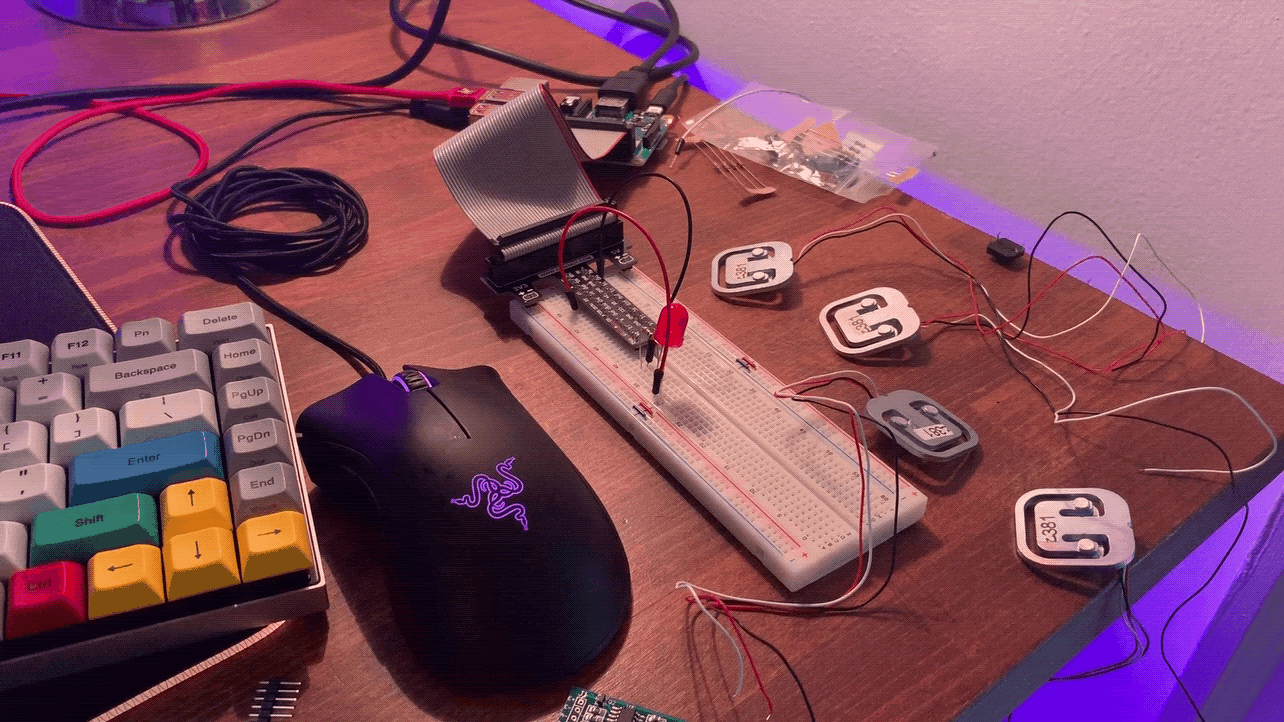
Just be careful that your cat doesn’t try to eat your project while you are getting your Hello World app up and running. ?
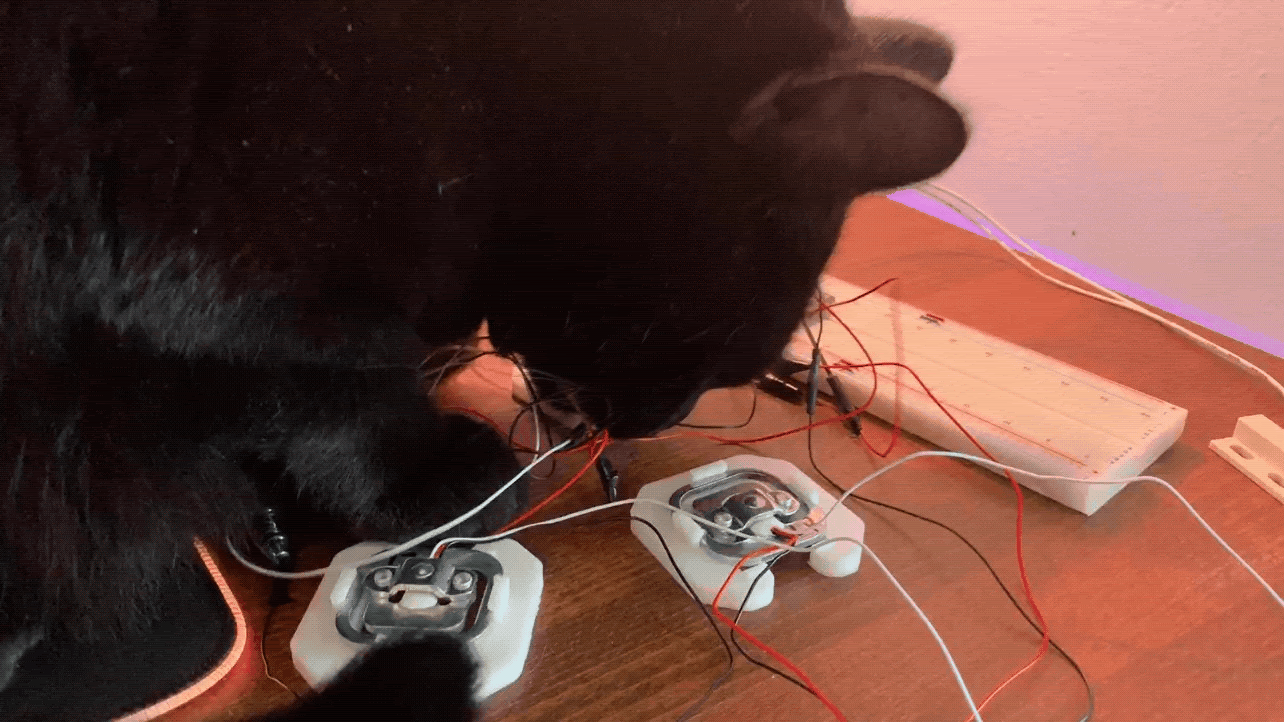
IoT (AKA: Internet of Toilets ?) Kitty Litter Box
Which leads me to my personal IoT project, the IoT Kitty Litter Box. For this project, I opted to use Johnny-Five. So, what the heck is this IoT Kitty Litter Box, and why would anyone want to build such a thing? Well, the goal of building an internet connected Litter box was to:
- Help track my feline friend’s health by passively measuring my cat’s weight every time he sets foot in the litter tray.
- The box is also monitoring my cat’s bathroom patterns over time. It will make it easy to track for any changes in bathroom behavior.
- Make easy to check out the data. The litter box is also connected to a companion website that displays the relevant bathroom data in an easy-to-understand graph format. You can check that out here: https://iot-kitty-litter-box.herokuapp.com.
- Explore IoT projects and have some fun!
Also personally, I like the thought of building something that teeters right on the border of being completely ridiculous and kinda genius. Frankly, I’m shocked that no one has really made a consumer product like this! Here it is in it’s all of it’s completed glory.

Materials and Tools
- 1 x Raspberry Pi
- I used a Raspberry Pi 3 Model B for this demo, but any model will do.
- 1 x Breadboard
- 2 x Female to male wires
- 1 x 3D printer [Optional]
- The 3D printer was used for printing the case where the electronics are enclosed.
- 1 x PLA filament [Optional]
- Any color will work.
- 1 x Solder iron and solder wire
- 8 x M2x6 mm bolts
- 1 x HX711 module
- This module is required as a load cell amplifier and it converts the analog load cell signal to a digital signal so the Raspberry Pi can read the incoming data.
- 4 x 50 kg load cell (x4)
- They are used to measure the weight. In this project, four of load cells are used and can measure a maximum weight of 200kg.
- 1 x Magnetic door sensor
- Used to detect that the litter box is opened.
- 1 x Micro USB cable
- 1 x Cat litter box
How Does The IoT Kitty Litter Box Work?
So how does this IoT Kitty Litter Box work? Let’s take a look at the events that I needed to handle:
- When the lid of the box is removed, the box enter “maintenance mode.” When in maintenance mode, I can remove waste or refresh the litter.
- When the lid of the box is put back on, it leaves maintenance mode, waits 1 minute for the litter to settle, then it recalibrates a new base weight after being cleaned.
- The box then waits for a cat sized object to be added to the weight of the box. When this event occurs, we wait 15 seconds for the cat to settle and the box records the weight of the cat and records it in a MongoDB database.
- When the cat leaves the box, we reset the base weight of the box, and the box waits for another bathroom or maintenance event to occur.
You can also check out this handy animation that walks through the various events that we must handle.
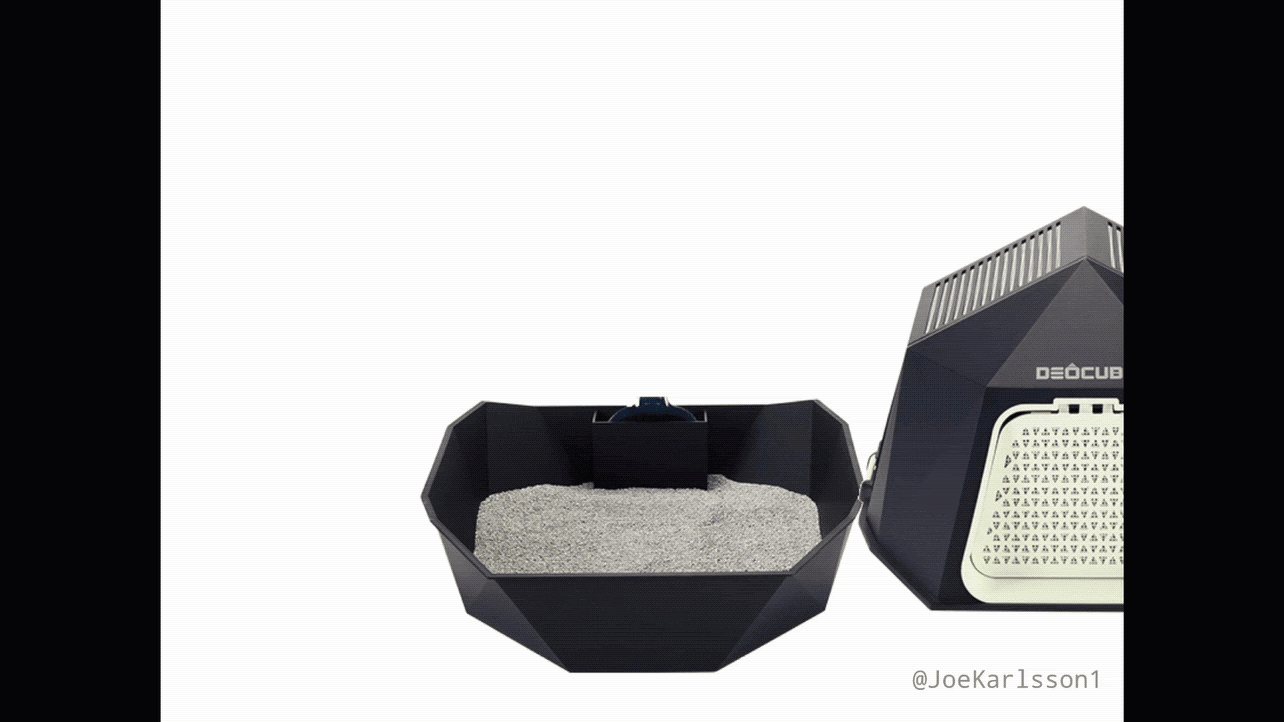
How To Write Code That Interacts With The Outside World
For this project, I opted to work with a Raspberry Pi 3 Model B+ since it runs a full Linux distro and it’s easy to get Node running on it. The Raspberry Pi is larger than other internet enabled chips on the market, but its ease of use makes it ideal for first timers looking to dip into IoT projects. The other reason I picked the Raspberry Pi is the large array of GPIO pins. These pins allow you to do three things.
- Power an external sensor or chip.
- Read input from a sensor (i.e. read data from a light or moisture sensor).
- Send data from the Raspberry Pi to the outside world (i.e. turning a light on and off).
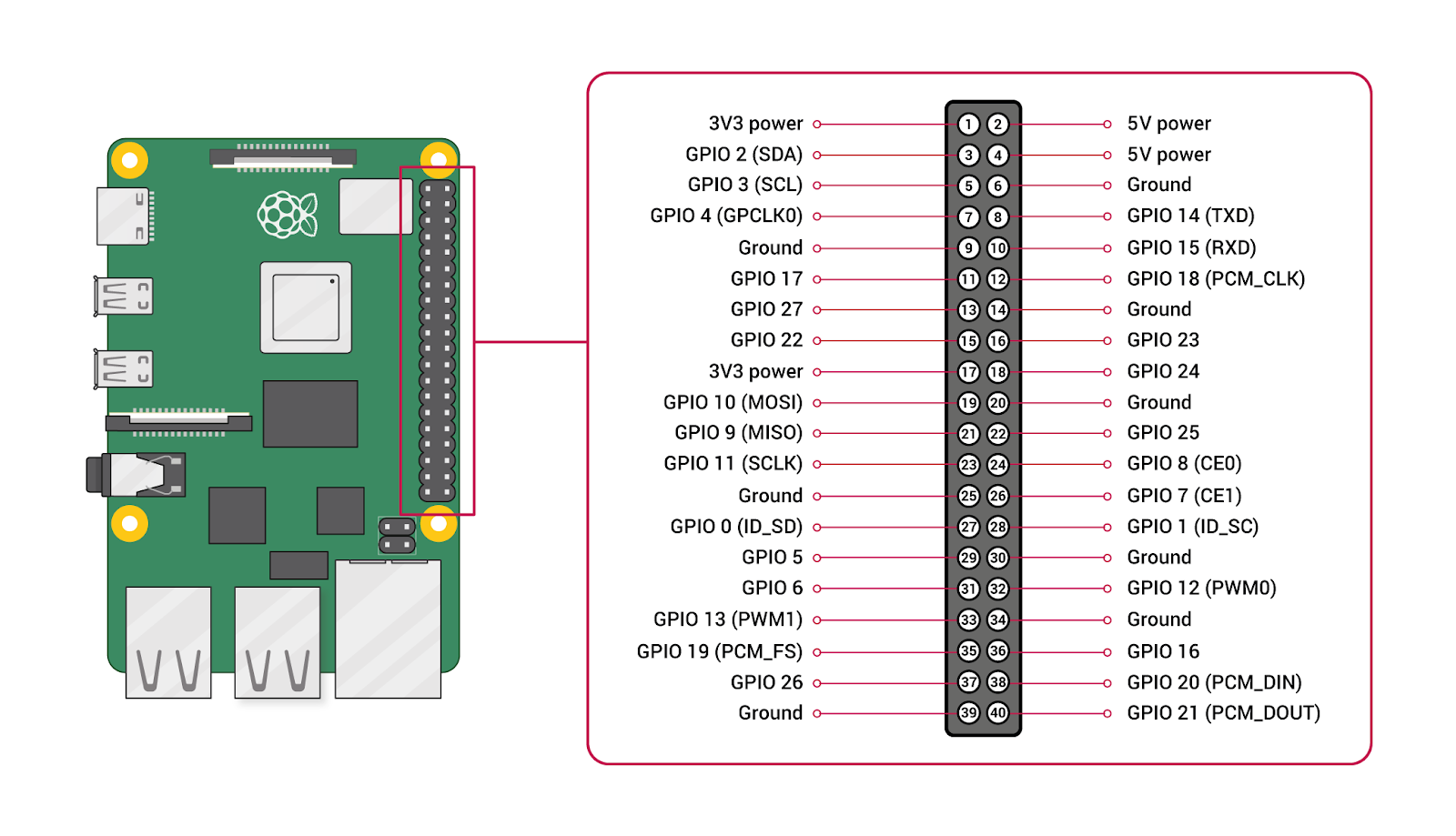 [^3]
[^3]
I wired up the IoT Kitty Litter Box using the schema below. I want to note that I am not an electrical engineer and creating this involved lots of Googling, failing, and at least two blown circuit boards. It’s okay to make mistakes, especially when you are first starting out.
Schematics
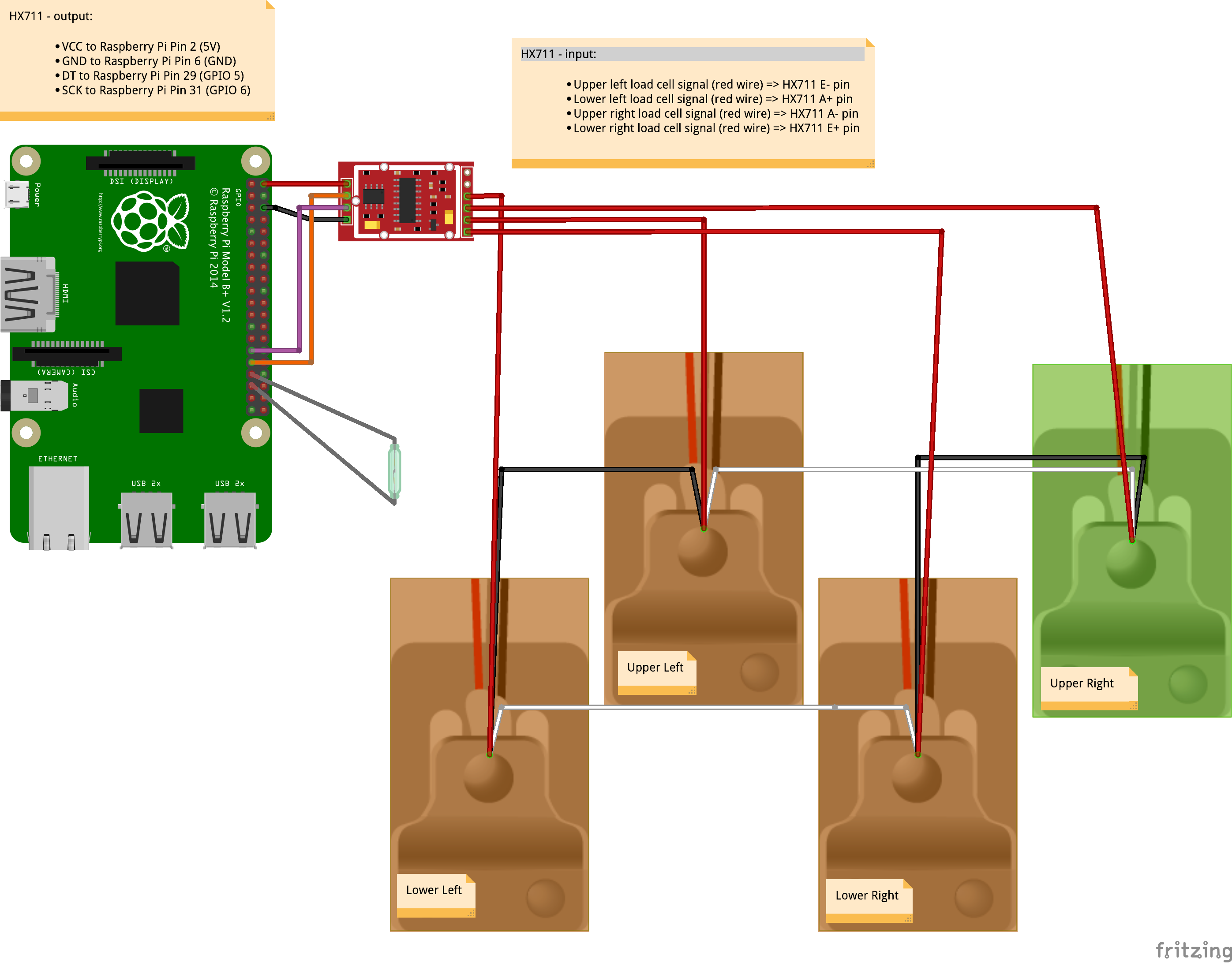
We will be using these GPIO pins in order to communicate with our sensors out in the “real world.”
Let’s Dig Into The Code ??
I want to start with the most simple component on the box, the magnetic switch that is triggered when the lid is removed, so we know when the box goes into “maintenance mode.” If you want to follow along, you can check out the complete code base here:
https://github.com/JoeKarlsson/iot-kitty-litter-box/tree
Magnetic Switch
const { RaspiIO } = require('raspi-io'); const five = require('johnny-five'); // Initialize a new Raspberry Pi Board const board = new five.Board({ io: new RaspiIO(), }); // Wait for the board to initialize then start reading in input from sensors board.on('ready', () => { // Initialize a new switch on the 16th GPIO Input pin const spdt = new five.Switch('GPIO16'); // Wait for the open event to get triggered by the sensor spdt.on('open', () => { enterMaintenceMode(); }); // Recalibrate the box once the sensor has closed // Once the box has been cleaned, the box prepares for a new event spdt.on('close', () => { console.log('close'); // When the box has been closed again // wait 1 min for the box to settle // and recalibrate a new base weight setTimeout(() => { scale.calibrate(); }, 60000); }); }); board.on('fail', error => { handleError(error); });
You can see the event and asynchronous nature of IoT plays really nicely with Node’s callback structure. Here’s a demo of the magnetic switch component in action.
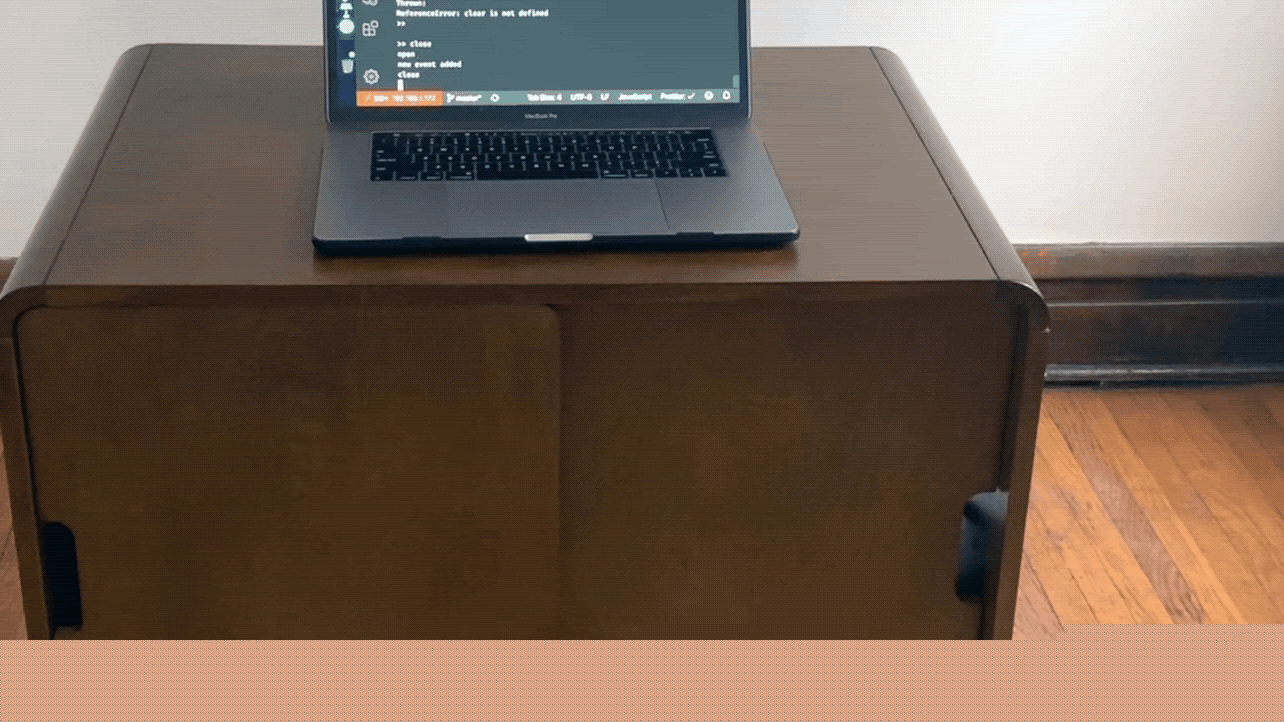
Load Cells
Okay, now let’s talk about my favorite component, the load cells. The load cells work basically like any bathroom scale you may have at home. The load cells are responsible for converting the pressure placed on them into a digital weight measurement I can read on the Raspberry Pi. I start by taking the base weight of the litter box. Then I wait for the weight of something that is approximately cat sized to be added to the base weight of the box and take the cat’s weight. Once the cat leaves the box, I then recalibrate the base weight of the box. I also recalibrate the base weight after every time the lid is taken off in order to account for events like the box being cleaned or having more litter added to the box.
In regards to the code for reading data from the load cells, things were kind of tricky. This is because the load cells are not directly compatible with Johnny-Five. I was however able to find a Python library[^4] that was able to correctly interface with the load cells.
#! /usr/bin/python2
import time
import sys
import RPi.GPIO as GPIO
from hx711 import HX711
# Infintely run a loop that checks the weight every 1/10 of a second
while True:
try:
# Prints the weight - and send it to the parent Node process
val = hx.get_weight()
print(val)
# Read the weight every 1/10 of a second
time.sleep(0.1)
except (KeyboardInterrupt, SystemExit):
cleanAndExit()In order to use this code, I had to make use of Node’s Spawn Child Process API[^5].The child process API is responsible for spinning up the Python process on a seperate thread. Here’s what that looks like.
const spawn = require('child_process').spawn; class Scale { constructor(client) { // Spin up the child process when the Scale is initialized this.process = spawn('python', ['./hx711py/scale.py'], { detached: true, }); } getWeight() { // Takes stdout data from Python child script which executed // with arguments and send this data to res object this.process.stdout.on('data', data => { // The data is returned from the Python process as a string // We need to parse it to a float this.currWeight = parseFloat(data); // If a cat is present - do something if (this.isCatPresent() { this.handleCatInBoxEvent(); } }); this.process.stderr.on('data', err => { handleError(String(err)); }); this.process.on('close', (code, signal) => { console.log( `child process exited with code ${code} and signal ${signal}` ); }); } [] } module.exports = Scale;
This was the first time I have played around with the Spawn Child Process API from Node. Personally, I was really impressed by how easy it was to use and troubleshoot. It’s not the most elegant solution, but it totally works for my project and it uses some cool features of Node. Let’s take a look at what the load cells look like in action. In the video below you can see how pressure placed on the load cells is registered as a weight measurement from the Raspberry Pi.
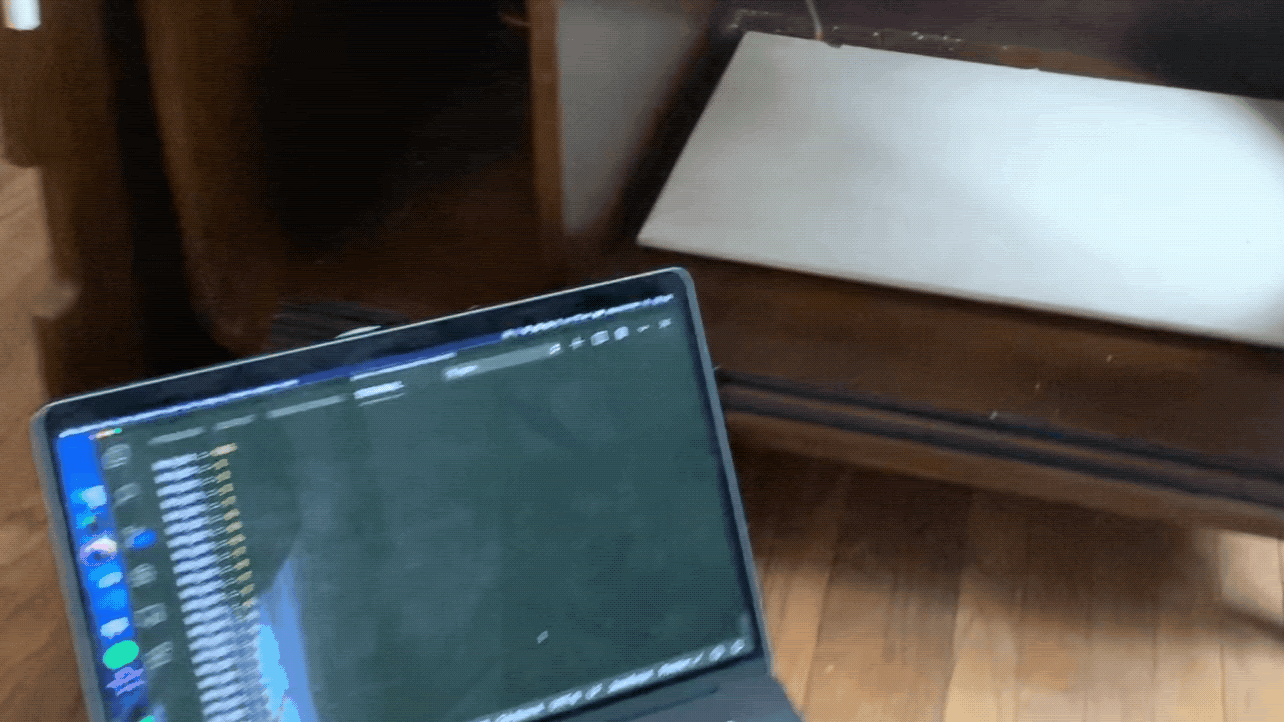
How to Handle IoT Data
Okay, so as a software engineer at MongoDB, I would be remiss if I didn’t talk about what to do with all of the data from this IoT device. For my IoT Litter Box, I am saving all of the data in a fully managed database service on MongoDB Atlas. Here’s how I connected box litter box to the MongoDB Atlas database.
const MongoClient = require('mongodb').MongoClient;
const uri = 'mongodb+srv://joe:<password>@cluster0.mongodb.net/iot'
const client = new MongoClient(uri, { useNewUrlParser: true });
client.connect(err => {
const collection = client.db('IoT').collection('toilets');
// perform actions on the collection object
client.close();
});IoT Data Best Practices
There’s a lot of places to store your IoT data these days so I want to talk about what you should look for when you are evaluating data platforms. If you want to get $200 in free MongoDB Atlas Credits for your next project, sign up here and apply code JOEKATLAS200 on the billing page. For additional information on activating your MongoDB Atlas credits, check out my post, How To Activate Your MongoDB Atlas Credits.
High Database Throughput
First thing when selecting a database for your IoT project, you need to ensure that you database is able to handle a massive amount of concurrent writes. Most IoT architectures are write heavy, meaning that you are writing more data to your database then reading from it. Let’s say that I decide to start mass manufacturing and selling my IoT Kitty Litter Boxes. Once I deploy a couple of thousand boxes in the wild, my database could potentially have a massive amount of concurrent writes if all of the cats go the bathroom at the same time! That’s going to be a lot of incoming data my database will need to handle!
Flexible Data Schema
You should also consider a database that is able to handle a flexible schema. This is because it is common to either add or upgrade sensors on an IoT device. For example, on my Litter Box, I was able to easily update my schema to add the switch data when I decided to start tracking how often the box gets cleaned.
Your Database Should Easily Time Series Data
Lastly, you will want to select a database that natively handles time series data. Consider how your data will be used. For most IoT projects, the data will be collected, analyzed, and visualized on a graph or chart over time. For my IoT Litter Box, my database schema looks like the following.
{
"_id": { "$oid": "dskfjlk2j92121293901233" },
"timestamp_day": { "$date": { "$numberLong": "1573854434214" } },
"type": "cat_in_box",
"cat": { "name": "BMO", "weight": "200" },
"owner": "Joe Karlsson",
"events": [
{
"timestamp_event": { "$date": { "$numberLong": "1573854435016" } },
"weight": { "$numberDouble": "15.593333333" }
},
{
"timestamp_event": { "$date": { "$numberLong": "1573854435824" } },
"weight": { "$numberDouble": "15.132222222" }
},
{
"timestamp_event": { "$date": { "$numberLong": "1573854436632"} },
"type": "maintenance"
}
]
}
Summary and Next Steps
Alright, let’s wrap this party up. In this post, we talked about why you should consider using Node for your next IoT project: it’s easy to update over a network, the internet already speaks JavaScript, there are tons of existing libraries/plugins/APIs (including Cylon.js & Johnny-Five), and JavaScript is great at handling event-driven apps. We looked at a real life Node based IoT project, my IoT Kitty Litter Box. Then we dug into the codebase for the IoT Kitty Litter Box. We also discussed what to look for when selecting a database for IoT projects: should be able to concurrently write data quickly, have a flexible schema, and be able to handle time series data.
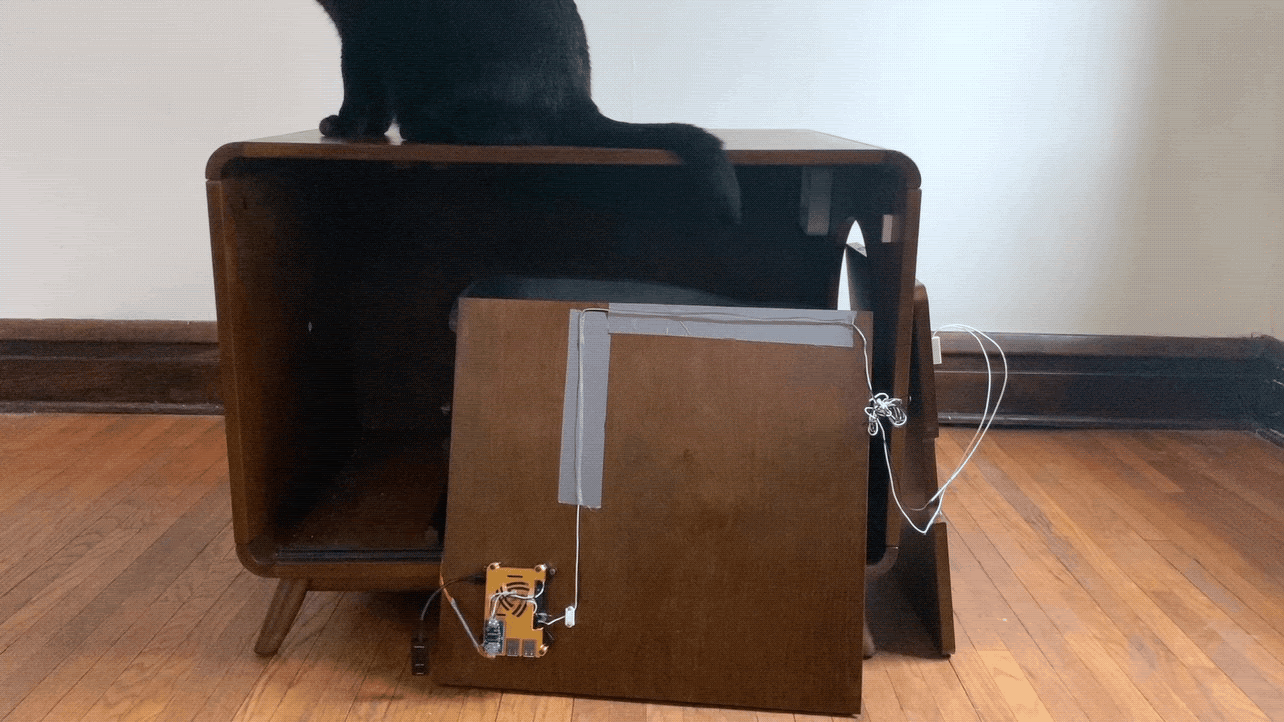
What’s next? Well, if I have inspired you to get started on your own IoT project, I say, “Go for it!” Pick out a project--even if it’s “crappy”--and build it. Google as you go, and make mistakes--I think it’s the best way to learn. I hereby give you permission to make stupid stuff just for you, something to help you learn and grow as a human being and a software engineer.
Additional Resources:
- Bringing JavaScript to the IoT Edge - Joe Karlsson | Node + JS Interactive 2019: https://www.youtube.com/watch?v=711Sb55fzdg
- IoT Kitty Litter Box Source Code: https://github.com/JoeKarlsson/iot-kitty-litter-box
- $200 in free MongoDB Atlas Credits. Sign up using this link and apply code JOEKATLAS200 on the billing page: http://bit.ly/IoTKittyJSJan
- For additional information on activating your MongoDB Atlas credits: How To Activate Your MongoDB Atlas Credits
- If you want to chat about your IoT project (or whatever else is on your mind), HMU on Twitter: https://twitter.com/joekarlsson1
Notes
[^1]: https://nodejs.org/en/blog/announcements/nodejs-foundation-survey/ [^2]: What the heck is the event loop anyway? | Philip Roberts | JSConf EU: https://www.youtube.com/watch?v=8aGhZQkoFbQ [^3]: https://www.raspberrypi.org/documentation/usage/gpio/ [^4]: https://github.com/tatobari/hx711py [^5]: https://nodejs.org/api/child_process.html
This content originally appeared on JavaScript January and was authored by Emily Freeman
Emily Freeman | Sciencx (2020-01-26T13:48:00+00:00) An Introduction to IoT (Internet of Toilets ). Retrieved from https://www.scien.cx/2020/01/26/an-introduction-to-iot-internet-of-toilets/
Please log in to upload a file.
There are no updates yet.
Click the Upload button above to add an update.
